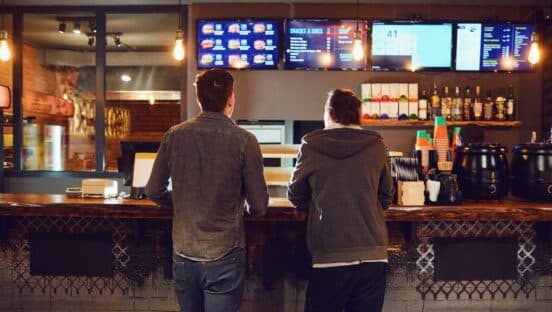Though the pandemic has decimated the restaurant industry, it’s also led to a great deal of innovation and creativity. For example, virtual brands and ghost kitchens have picked up serious momentum, and the concept is hard to argue with: with minimal increases in labor, SKUs, and storage, restaurants are able to leverage a virtual brand and add a substantial amount of revenue at a time when they need it most.
“The opportunity to sell more food without additional labor costs or rent makes a virtual brand a very valuable proposition,” says Robert Earl, renowned restaurateur and co-founder and owner of Virtual Dining Concepts. “Most restaurants have spare capacity at certain times of day, or times during the week. Virtual brands become a very compelling way to grow a restaurant business.”
But while some larger brands have made headlines by rolling out virtual brands across huge footprints, it’s clear that not every restaurant has that capability. Building a concept from scratch, dedicating resources to the research and development, and then the marketing of that concept, not to mention then developing relationships with delivery partners—all of these things cost brands a lot of time and money that they don’t have right now.
Earl’s company, Virtual Dining Concepts, was founded with the idea of providing restaurateurs a turnkey solution that installs a virtual brand in their kitchen. Virtual Dining Concepts covers every aspect of the launching and upkeep of the virtual brand—it starts with a proven menu designed by successful chef, restaurateur, and frequent Food Network guest Eric Greenspan. Other features provided to restaurants include well-branded packaging, social media exposure and other marketing resources, as well as onboarding and quality control.
“Your virtual brand comes with buying power, and third-party delivery relationships already installed,” Earl says. “We’ve truly thought of everything that you need to add a virtual brand into your kitchen and start making extra revenue,” says Earl.
Virtual Dining Concepts already has dozens of proven brands, and it’s looking for restaurants that will essentially function as franchisees of those virtual brands: for example, a pizzeria might implement the “Wing Squad” concept, and become a purveyor of delivery wings, a sizzling category in the delivery-only sector during off-peak hours.
The company is also developing celebrity brands, with two already launched, and several more on the way. For example, TYGA BITES is a concept developed by the internationally successful hip-hop artist Tyga, in conjunction with Earl, his son Robbie Earl, and Greenspan, and it offers bite-sized chicken with various on-trend, craveable flavors. The concept is available to independent restaurateurs in over 30 markets across the country and has already seen great success.
Earl also emphasizes how little space and labor the virtual brand takes up, seamlessly integrating into even the most complex kitchen operations.
“Virtual brands are here to stay,” Earl says. “Yes, people will return to restaurants someday, but during COVID we’ve all become very comfortable with delivery. Our brand can come in and almost overnight help your restaurant begin generating revenue, and a guest who walked in would never notice the virtual brand was there. They’d never see a menu, or a logo. And meanwhile, somebody looking for delivery food on a third-party app would see that brand. And that’s where your new revenue is generated from.”
For more information on how to add a virtual brand to your kitchen, visit the Virtual Dining Concepts website.













